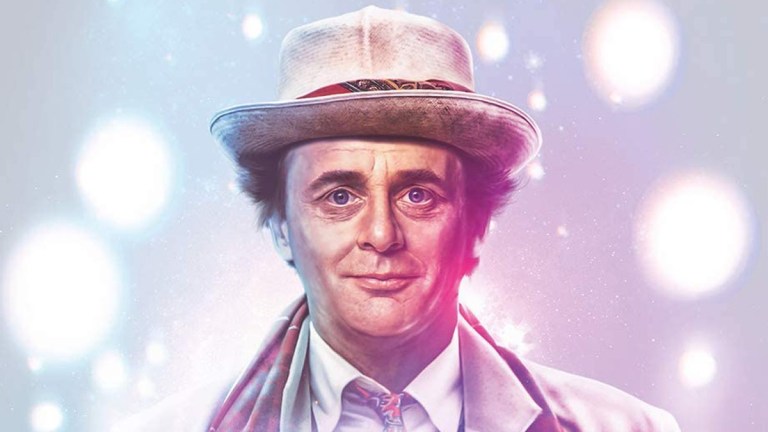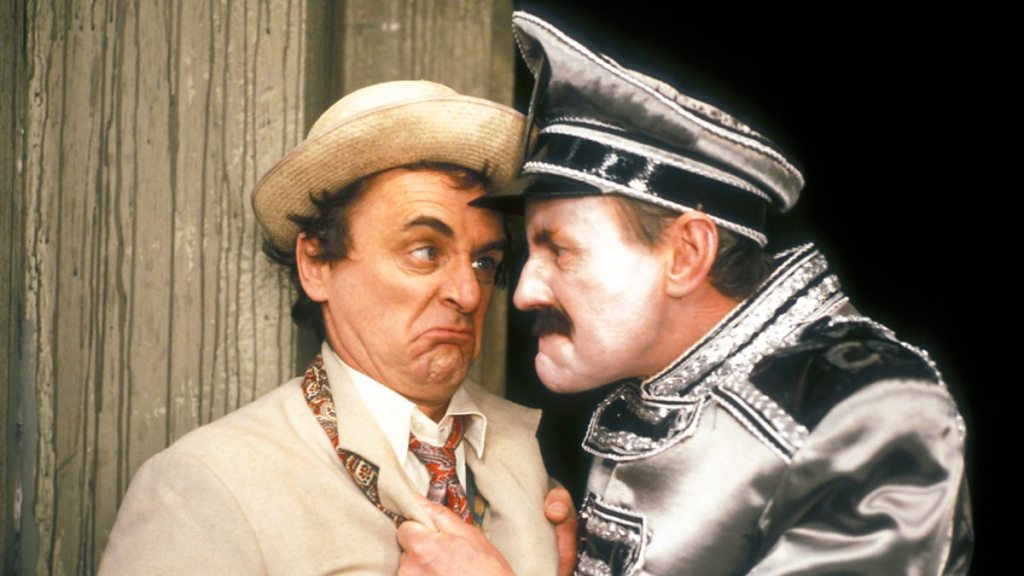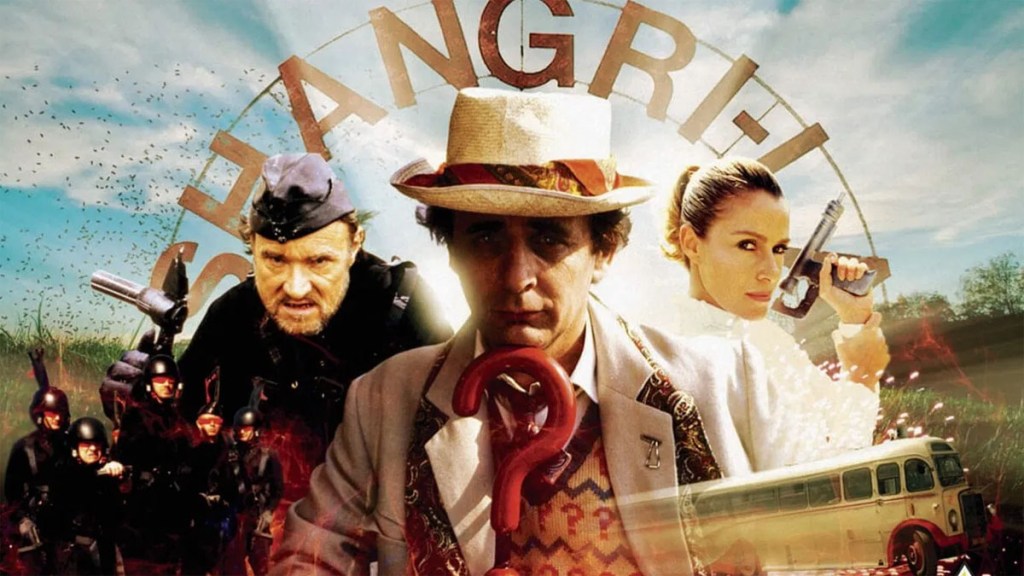How Doctor Who Was Quietly Revolutionised By Its Least Popular Season

In 2014, when Doctor Who Magazine asked its readers to rank the show’s first 50 years, out of 241 options, Season 24 stories ‘Time and the Rani’ came 239th, ‘Paradise Towers’ 230th, ‘Delta and the Bannermen’ 217th, with ‘Dragonfire’ thought best of in 215th place. This was largely a repeat of its 2009 poll, although then readers rated ‘Delta and the Bannermen’ above ‘Dragonfire’. Season 24 was also ranked bottom in a GQ article ranking every series of Doctor Who – a combination of words I never thought I’d write.
Season 24 of Doctor Who went into production just as its 23rd season, the 14-episode ‘The Trial of a Time-Lord’ was finishing up on TV. By late 1986, producer John Nathan-Turner was expecting to be moved onto another show and had lost both his script-editor and the show’s most prolific writer (the former quitting after long-simmering tensions erupted behind the scenes, and the latter passing away during the making of the series).
A surprised Nathan-Turner was given 13 months to hire a new script editor and produce 14 episodes under a BBC edict that Doctor Who had to become lighter and funnier (not dissimilar to the instructions producer Graham Williams found himself under in the Seventies). He also ended up having to cast a new Doctor, after Colin Baker was sacked and didn’t want to return for one story just to regenerate. Sylvester McCoy was formally cast at the end of February and started filming ‘Time and the Rani’ in April.
‘Time in the Rani’ was written by husband-and-wife duo Pip and Jane Baker (UK readers may remember their early-Nineties CBBC show Watt on Earth), who were given the job because there were no scripts either ready to go or in development. Nathan-Turner knew they could write quickly after they’d completed the final episode of ‘Trial of a Time Lord’ at extremely short notice earlier in the year.

The Bakers’ writing style was to produce frothy and campy nonsense and then act as if they’d just written The Seventh Seal. ‘Time and the Rani’ contains continuity references such as costume shout outs to past Doctors, a returning villain and references to the Lord President of Gallifrey. It’s set on an alien planet and makes no attempt to engage with contemporary life either directly or allegorically, and is happy to be adventure for adventure’s sake. It’s not a last hurrah for that style of story, but is a strong argument for why it had to be stop being the House Style after five years (though, to be fair to it, it has some nice ideas in it and the scene with the Doctor chatting away to the universe’s geniuses is great).
New Script Editor Andrew Cartmel wasn’t a fan of ‘Time and the Rani’ but arrived too late in the day to have much impact on it. He was able to influence writer Stephen Wyatt away from a story steeped in continuity and towards what became ‘Paradise Towers’. This was based on a combination of the novel High Rise by J.G. Ballard, Wyatt’s real-life experience in London’s East End, and Cartmel’s fondness for Alan Moore comics. Not only is it the first story for years to not refer to other Doctor Who stories and doesn’t feature the TARDIS interior but it is, in stark contrast to ‘Time and the Rani’, clearly about something real.
What ‘Paradise Towers’ did, which few Doctor Who stories had done before, was sympathetically reflect a working class setting by depicting people trapped in a block of flats by the whims of an aloof architect. In doing so, it didn’t go for realism. The show has rarely been in a position to, and here the budget and imposed tone meant it couldn’t. What it does have is a coherent approach: everything is big, be it the cleaning robots, the performances or the costuming.
So we have a Doctor Who story that isn’t aiming at its usual audience (Considering it had lost viewers this is clearly sensible) and is trying to overcome its restrictions by putting on a pantomime about social structures featuring cannibals and killer robots. Criticising it for lacking a realism it could never achieve is harsh.
Season 24 follows ‘Paradise Towers’ with a story set in a holiday camp and then in a shopping centre. Being Doctor Who, the shopping centre is in space and run by an intergalactic criminal, and the holiday camp becomes the battleground for an attempted genocide (“Now, let me try and get this right. Are you telling me that you are not the Happy Hearts Holiday Club from Bolton, but instead are spacemen in fear of an attack from some other spacemen?”) set to the backdrop of the space race and the coming of rock and roll. Again, it seems to be courting an audience other than organised fandom for the first time in five years, using recognisable aspects of contemporary life and mashing them up with fresh takes on Doctor Who staples.
While the tone is cartoonish, the satire of a building, designed by a celebrated architect, that actively harms its residents is clearly pointed. In fact, because the tone is cartoonish, it gets away with more. Over the past few series Doctor Who had been very ‘LOOK how NASTY this is. LOOK. It’s HORRIBLE’, whereas Season 24 knowingly presented things that were both silly and horrible simultaneously, revelling in the dissonance. This is one of the many ways in which the Seventh Doctor era prefigures Russell T. Davies’ approach. The survivors of ‘Paradise Towers’ coming together to fight their attackers feels very RTD.
In fact, given that ‘Survival’ is often heralded as a mirror image of ‘Rose’, it’s worth noting how Season 24 combines the recognisable with the fantastical in the same way we’d see Autons in shopping centres or plumbers and burger vans in space during Series 1. The Doctor was part of this too. McCoy was instructed to play the role like Patrick Troughton, but specifically Troughton’s lighter moments. Ultimately McCoy would gravitate towards how Troughton fully played the Doctor in the Sixties, but here he’s mostly being silly and avuncular. Indeed McCoy was clowning more than the role demanded.
What this allows, though, is for the Doctor to engage more with the people in these stories. In an extremely Troughton-esque move, the Doctor happily mixes and enthuses with the tourists in ‘Delta and the Bannermen’. In one scene he’s following an alien princess but stops to check on the sound of someone crying. He leaves a Doctor Who story to step into the real world, sitting in people’s bedrooms holding a guitar and making wistful observations about love. And he belongs. This Doctor fits in this world, and this version of the Seventh Doctor lingers even amidst the Winging-It-Chess-Playing manipulations of later series. It expands what the character is capable of in a positive way.

I’m not going to claim here that Season 24 as a whole should be thought of amongst the very best of Doctor Who, but it’s important to address how much it achieved in difficult circumstances. Despite the rushed production it managed to take Doctor Who from the lows of cancellation and its flawed return and point it in the direction of Seasons 25 and 26. Beyond this we have the New Adventures and the show’s return in 2005, all going further with ideas brought into the show in the late Eighties. I am going to claim that ‘Paradise Towers’ is great and ‘Delta and the Bannermen’ is charming in a delirious way. ‘Dragonfire’ is the only real dud of the new approach, being somewhat plodding and incoherent. What Season 24’s unpopularity demonstrates is that fans are far more willing to overlook a poverty of ideas over a poverty of appearance.
Once I’ve put my flameproof hat on, I’m going to say ‘Terror of the Zygons’ is a great example of a very well-made story that is ultimately just a fun yarn with some particularly egregious examples of ‘Activate the Unnecessarily Slow Dipping Mechanism’ type monsters. It’s not about anything. It’s just a blast. ‘Paradise Towers’ is furious and inventive, witty and (in Doctor Who terms) novel. It just looks like someone asked CBBC to adapt a 2000AD strip, and this is too much for some fans.
The show’s reach exceeded its grasp, however. Doctor Who had been temporarily cancelled and then returned diminished. It had become harder to disguise the lack of budget. This was a period of recovery and transition, and so the ambitions of the scripts (the caretakers being older men and Pex being a Stallone-esque slab of a man) were beyond Doctor Who in the late Eighties. If ‘Paradise Towers’ had been made in 2007, Richard Briers would certainly have taken it more seriously. Equally, given his influences, Cartmel’s Doctor Who would make a great series of comics.
You don’t have to enjoy it, but you should acknowledge that without Season 24 Doctor Who would be a much duller place.
The Doctor Who Season 24 Blu-ray box set is released on June 21st.

